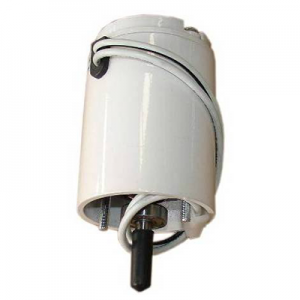Automotive motor performance requirements
Cars need high-speed ranges such as starting, accelerating, stopping, and stopping, and low-speed requirements when surfing the Internet at high speeds. Personal needs should be able to meet the speed from zero to the maximum speed of the car. The following main requirements for electric vehicles can be summarized into 10 aspects
1) High voltage. Within the allowable range, using high voltage as much as possible can reduce the size of the motor and the size of equipment such as wires, especially the cost of the inverter. The working voltage is increased from 274 V of THS to 500 V of THS B; under the condition of the same size, the maximum power is increased from 33 kW to 50 kW, and the maximum torque is increased from 350 N”m to 400ON”m. It can be seen that the application of high-voltage systems is extremely beneficial to the improvement of vehicle power performance.
(2) High speed. The rotation speed of the induction motor used in the electric vehicle can reach 8 000 to 12 000 r/min. The high-speed motor is small in size and light in weight, which is conducive to reducing the quality of the equipment installed on the vehicle.
(3) Light weight and small size. The quality of the motor can be reduced through the use of aluminum alloy casing, and the materials of various control devices and cooling systems should also be selected as light materials as possible. Electric vehicle drive motors require high specific power (output power per unit mass of the motor) and high efficiency in a wide range of speed and torque, in order to reduce vehicle weight and extend driving range; while industrial drives Motors usually consider power, efficiency and cost comprehensively, and optimize the efficiency around the rated operating point.
(4) The motor should have a larger starting torque and a larger range of speed regulation performance to meet the power and torque required for starting, accelerating, running, decelerating, and braking. The electric motor should have an automatic speed regulation function to reduce the driver’s control intensity, improve driving comfort, and be able to achieve the same control response as the accelerator pedal of an internal combustion engine vehicle.
(5) The electric vehicle drive motor needs to have 4 to 5 times the overload to meet the requirements of short-term acceleration and maximum gradeability, while the industrial drive motor only requires 2 times the overload.
(6) Electric vehicle drive motors should have high controllability, steady-state accuracy, and dynamic performance to meet the coordinated operation of multiple motors, while industrial drive motors only require a certain specific performance.
(7) The electric motor should have high efficiency, low loss, and can recover braking energy when the vehicle is decelerating.
(8) The safety of the electrical system and the safety of the control system should meet the relevant standards and regulations. The working voltage of various power battery packs and motors of electric vehicles can reach more than 300 V, so high-voltage protection equipment must be equipped to ensure safety.
(9) It can work reliably under harsh conditions. The motor should have high reliability, temperature and moisture resistance, low noise during operation, and be able to work for a long time in a harsh environment.
(10) Simple structure, suitable for mass production, easy to use and maintain, low price, etc.
Post time: Jun-04-2021

